Assess now corporate training providers and proposals.

Is the corporate training proposal coming from a MQA Registered Training Institution?
The registered Training Institution is committed to upholding the highest quality standards by adhering to the Mauritius Qualifications Authority Act, the Mauritius Qualifications Authority (Training Institutions) Regulations, and the Quality Assurance Framework (QAF).
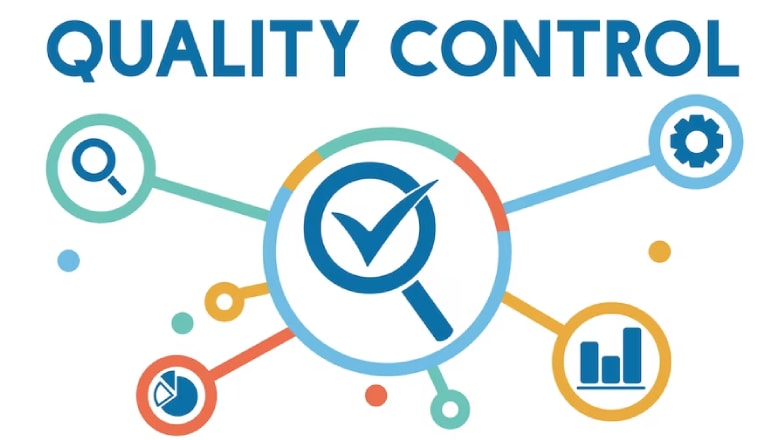
The registered Training Institution's failure to adhere to the Mauritius Qualifications Authority Act, the Mauritius Qualifications Authority (Training Institutions) Regulations, and the Quality Assurance Framework (QAF) undermines its commitment to maintaining essential quality standards. This lapse reflects poorly on the institution's ability to provide high-quality training and could impact the credibility and effectiveness of its programs.
Since how many years is the training institution in operation?

An established institution brings a wealth of expertise and a proven track record of success, which enhances its ability to design and implement effective training programs. With years of operation, the institution has likely refined its curriculum, developed robust processes, and built a network of industry connections, all of which contribute to a richer learning experience. Additionally, long-standing institutions have demonstrated resilience and adaptability in evolving educational and vocational landscapes.
Does the registered training institution use the Accelerated Learning Principles?
Accelerated Learning Principles focus on enhancing the speed and effectiveness of learning by optimizing the process. These principles are grounded in cognitive psychology and educational research and emphasize active engagement. Learners achieve better outcomes when they are actively involved in the learning process. This can include interactive activities, hands-on experiences, and practical applications of knowledge.
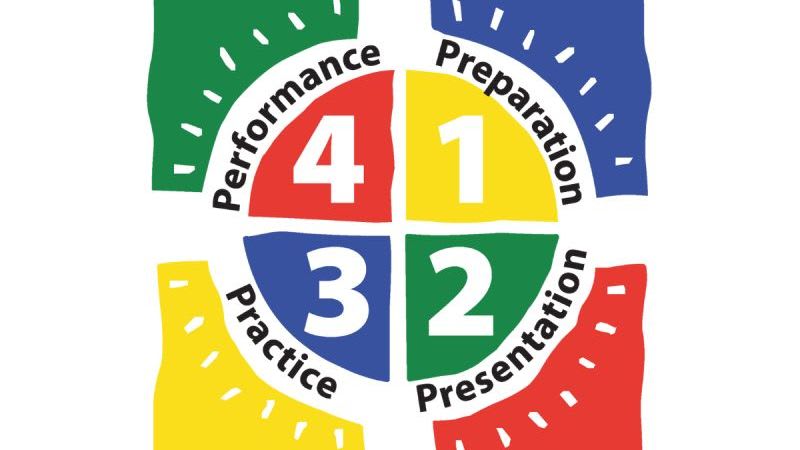
The training institution’s disregard for Accelerated Learning Principles significantly undermines the effectiveness of its programs. Without employing strategies such as active engagement and multisensory learning, the institution risks delivering a less impactful experience. The absence of these principles can lead to reduced learner motivation, poor retention of information, and a less dynamic learning environment. Consequently, participants may struggle to grasp and apply the material effectively, ultimately compromising their overall success and satisfaction with the training.
Are the trainer Accelerated Learning Certified?
Here are benefits of Accelerated Learning (AL) Certification:
- Gaining a deep understanding of the 8 principles of AL and learning how to apply them effectively in training sessions.
- Transforming traditional presentations into interactive activities that stimulate knowledge retention.
- Boosting learner engagement and motivation.
- Gaining the tools to implement AL in all training sessions.

Trained in these principles, a certified trainer can design and deliver educational programs that maximize engagement, retention, and application of knowledge. This certification demonstrates a commitment to employing evidence-based techniques that support faster and more profound learning, ensuring that participants achieve their learning goals efficiently. Additionally, it helps trainers stay updated with the latest pedagogical strategies, fostering a more dynamic and responsive learning environment. Ultimately, certification in Accelerated Learning validates a trainer’s expertise and enhances their credibility, leading to more impactful and successful training outcomes.
Are the trainers Learning Transfer Certified?
The 12 levers of Transfer Effectiveness emphasize the creation and execution of a robust transfer plan to ensure that training translates into tangible improvements in the workplace. Key elements include aligning learning objectives with organizational goals and communicating the training’s purpose clearly beforehand.
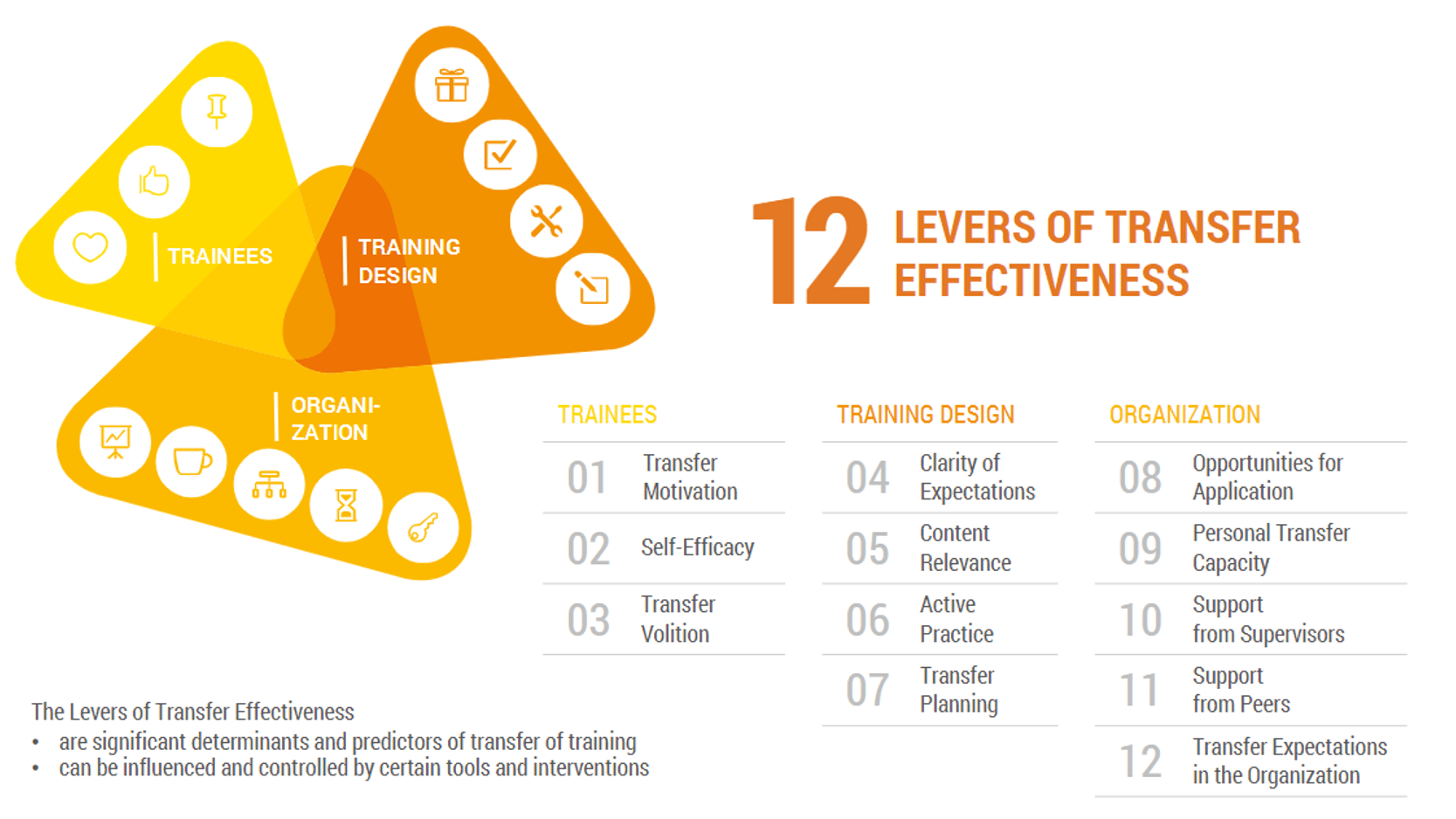
Leadership support and on-the-job coaching are crucial for reinforcing learning, and follow-up strategies help address real-world challenges. Feedback mechanisms and evaluation metrics assess the training’s impact and guide ongoing adjustments, ensuring that the transfer plan effectively bridges the gap between learning and practical application.
Are the trainers Certified KPI Professional?
Certification in Performance Management is crucial for a training provider as it ensures expertise in designing and delivering programs that effectively drive and measure employee performance. It validates the provider's ability to align training with organizational goals, implement robust evaluation metrics, and enhance overall productivity. This certification guarantees that the training is not only relevant but also impactful, ultimately leading to measurable improvements in performance.
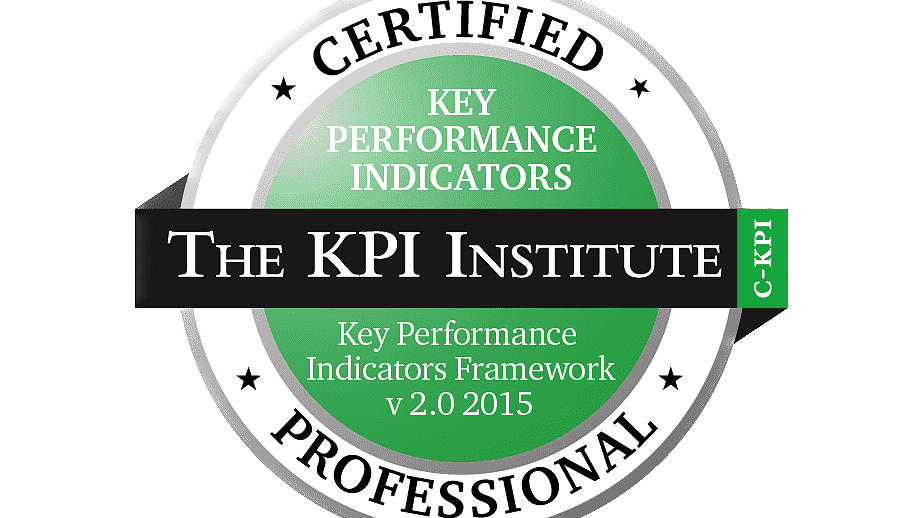
Without a certification in Key Performance Indicators (KPIs), there is a risk that the training might not effectively address or measure crucial performance metrics, potentially leading to less impactful outcomes and missed opportunities for significant performance improvements.
Are the trainers Kirkpatrick Training Evaluation Professional?
Implementing the Kirkpatrick Evaluation Model is essential for a training provider as it ensures a comprehensive approach to assessing training effectiveness. This model provides a structured framework for evaluating all levels of training impact, from participant reactions to tangible changes. By using this model, the provider guarantees that the training's value is thoroughly measured and continually enhanced.
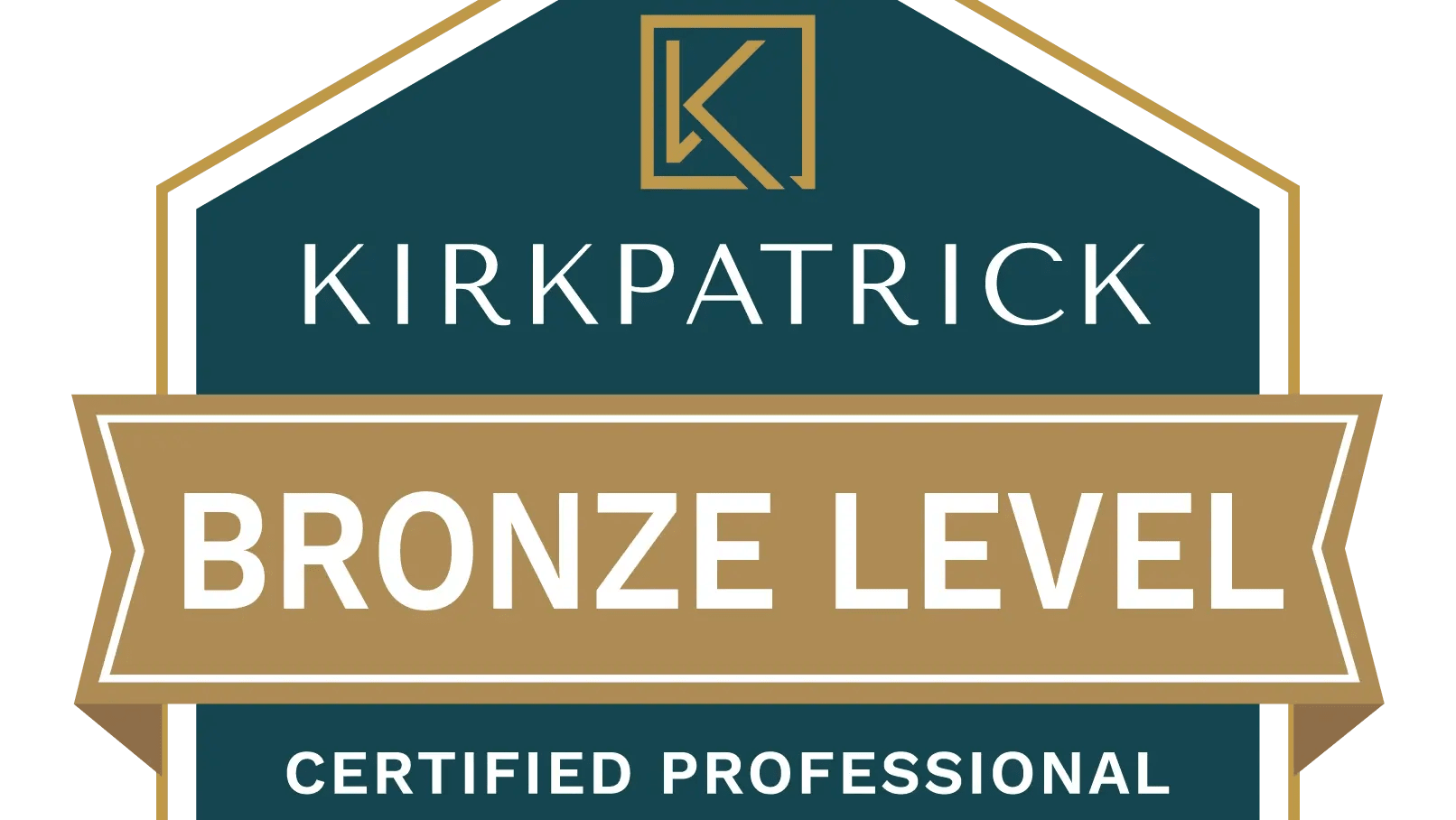
If a training provider does not master the Kirkpatrick Evaluation Model, it raises concerns about their ability to effectively assess and measure training outcomes. Without this expertise, there is a risk that the training's impact may be inadequately evaluated, leading to unclear insights into its effectiveness. This lack of mastery could result in less targeted and less impactful training interventions.
Does the trainer provider conduct a skills gap analysis before delivering the training?
Conducting a Skills Gap Analysis before training delivery is crucial for ensuring that training programs are precisely tailored to address the specific needs and deficiencies of employees. This analysis identifies the gap between current skills and the skills required for optimal performance, allowing for targeted and effective training interventions. By pinpointing these gaps in advance, organizations can design training that directly addresses areas of improvement.

Without proficiency in conducting a Skills Gap Analysis using psychometric tests before training delivery, the training provider may face challenges in accurately identifying and addressing specific skill deficiencies. This oversight can lead to poorly targeted training programs that fail to address key areas of development, ultimately resulting in less effective training outcomes and missed opportunities for significant improvement in employee performance.
Does the training institute provide Transfer Audit Questionnaire?
A Transfer Audit Questionnaire is essential before training delivery as it provides valuable insights into specific needs and expectations. Meeting with Human Resources or a manager to review this questionnaire helps align training objectives with organizational goals. This pre-training evaluation ensures that the program is tailored to address the most relevant issues, enhancing its effectiveness and increasing the likelihood of successful knowledge application once the training is complete.

Without a pre-training meeting with HR or a manager to review the Transfer Audit Questionnaire, there is a significant risk that the training program will not be aligned with the specific needs of the employees or the organization. This lack of preparation can lead to a mismatch between training content and actual skill gaps.
A Deficient Corporate Training Solution
The proposed corporate training solution is fundamentally flawed due to its disregard for training best practices and absence of a structured preparation and follow-up plan. The solution lacks a clear alignment with organizational goals and fails to address the specific needs and challenges of the company, resulting in generic content that may not be applicable to their daily responsibilities. Without the incorporation of processes from Kirkpatrick Evaluation Model, Transfer Effectiveness and Accelerated Learning, the training risks leading to insufficient skill development.
Moreover, the proposal neglects essential follow-up mechanisms, such as post-training evaluations, ongoing support, or performance metrics, which are critical for reinforcing learning and ensuring long-term impact. The absence of these elements means there will be no systematic approach to measure the training’s effectiveness or to address any gaps that may arise. Consequently, employees may fail to apply new skills effectively, and the training program is unlikely to generate meaningful change or improvement within the organization. This lack of integration and reinforcement ultimately undermines the investment in the training and may lead to wasted resources and unfulfilled expectations.

An Average Corporate Training Solution
The proposed corporate training solution meets basic standards but falls short of maximizing potential impact. It includes a general alignment with organizational goals and addresses some of the company’s needs, though the content remains somewhat generic and may not fully engage participants or address all specific challenges. While the training incorporates some established practices, such as basic evaluation methods, it lacks the depth and customization seen in more advanced solutions. This could result in a moderate level of skill development, but may not fully leverage methodologies like the Kirkpatrick Evaluation Model or advanced Transfer Effectiveness techniques.
The proposal includes standard follow-up mechanisms, such as post-training surveys and limited support, but these may not be robust enough to ensure long-term impact or address emerging needs comprehensively. Without a more detailed approach to measuring effectiveness and providing continuous reinforcement, the training might achieve some improvements but may not drive significant or sustained change within the organization. Overall, while the training solution is functional and provides a basic level of benefit, it may not fully optimize learning outcomes or deliver the high level of Return on Training Investment that a more tailored and strategically aligned program could offer.

An Excellent Corporate Training Solution
The proposed corporate training solution exemplifies best practices and is meticulously designed to align with organizational goals, ensuring both relevance and impact. It incorporates a comprehensive preparation phase that includes needs assessments, tailored content development, and alignment with strategic objectives, ensuring that the training is specifically suited to address the unique challenges and requirements of the company. The solution leverages proven methodologies such as the Kirkpatrick Evaluation Model, Transfer Effectiveness, and Accelerated Learning techniques to facilitate effective skill acquisition and application, ensuring that the training translates into measurable improvements in performance.
Additionally, the proposal includes robust follow-up mechanisms, such as post-training evaluations, continuous support, and performance metrics. These elements are essential for reinforcing learning, tracking progress, and addressing any emerging gaps. By systematically measuring the training’s effectiveness and providing ongoing support, the solution ensures that employees can effectively apply new skills and knowledge, driving meaningful change and improvement within the organization. This thoughtful approach not only maximizes the Return On Training Investment but also fosters a culture of continuous development and growth, ultimately enhancing overall organizational performance and achieving strategic objectives.
